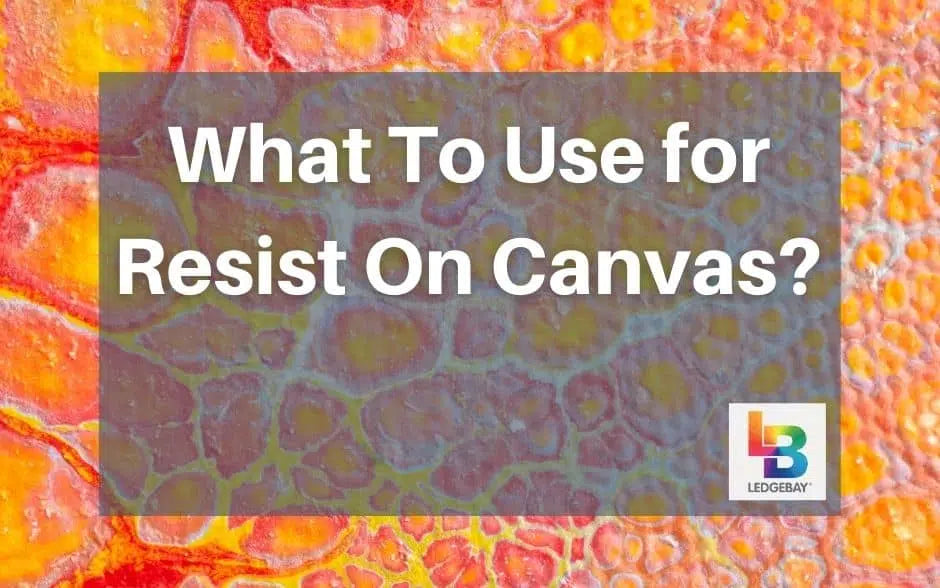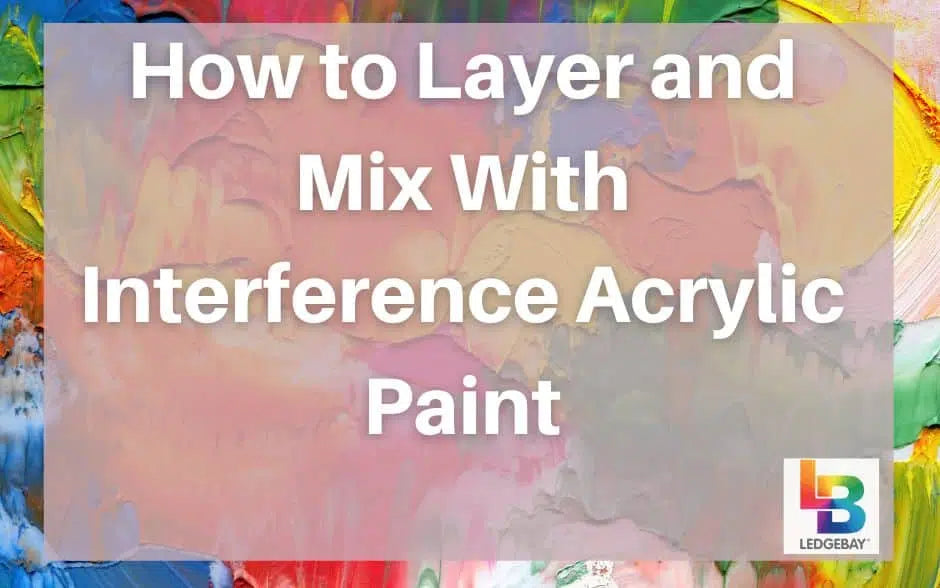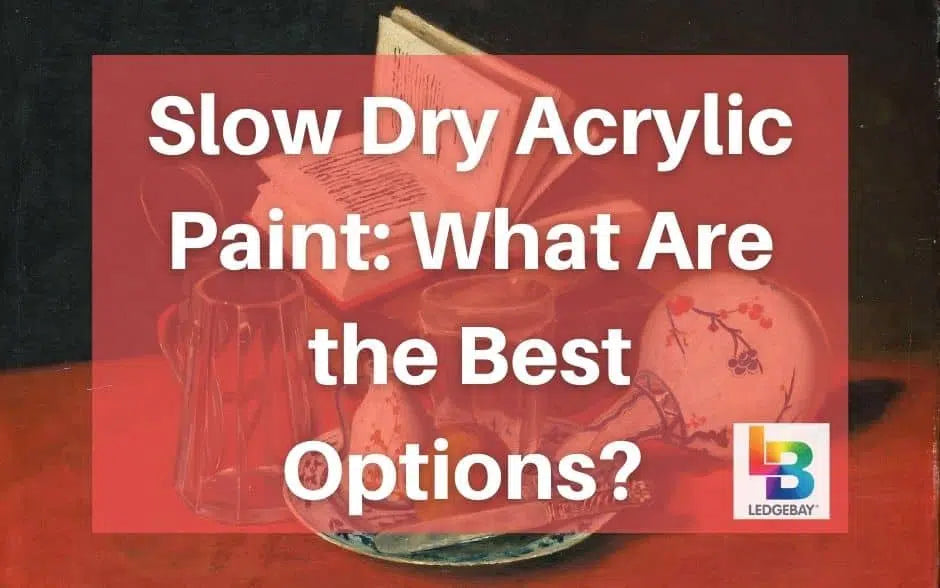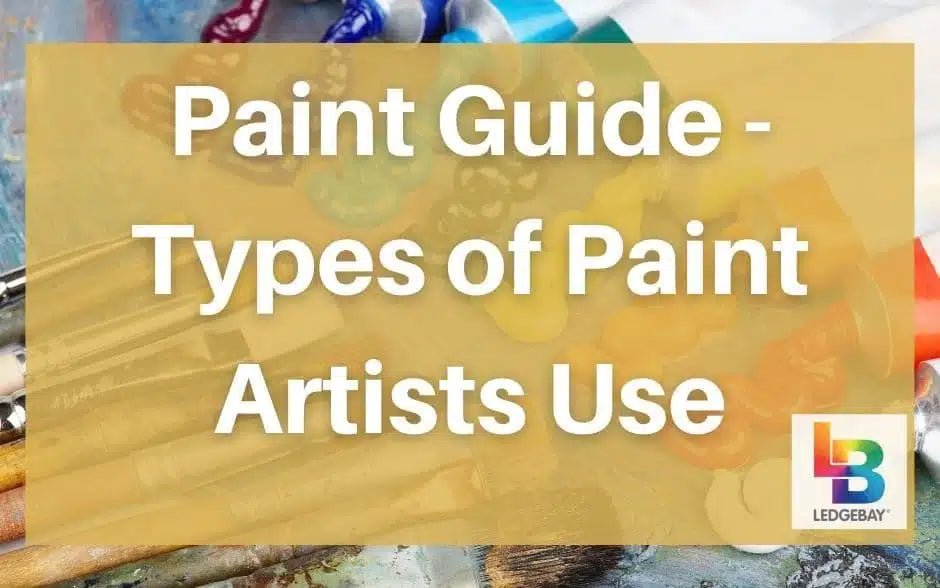What to use for resist on canvas is a question that comes up often in the world of mixed media art. There are many different materials that can be used, and the best one for you will depend on your personal preferences and what you are trying to form.
In this blog post, we will explore some of the most popular options for Resist art and discuss the pros and cons of each one. We hope that this information will help you decide what Resist art is right for you!
What Is A Resist Art?

A resist is any material that helps you draw lines, shapes, or patterns on your surface before adding paint or other medium. Aside from it can be so much fun it can be helpful if you want to add definition to your work or create interesting textures.
Some of the most popular options include tapes, stencils, stamps, and paper masks, permanent ink and gouache resist.What To Use For Resist On Canvas | Choosing A Surface
Before identifying the medium to use to resist on canvas, it is important to first consider what type of surface you will be working on. The most common surfaces for mixed media and painting are wood, paper, fabric, and glass frame. Each of these surfaces has its own unique properties that will affect the way that your resist material works.What To Use For Resist On Canvas | Medium

Tapes
It is one popular medium for canvas art. Also, it is easy to use and can help you form a good protective finish, clean lines and sharp edges. It is readily available and relatively inexpensive.Paper Masks
Masking Tapes are another type of resist for this art canvas. Paper masks are easy to use and can be found in a variety of shapes and sizes. They can also be easily customized to fit your project.Stamps
They are a versatile resist material that can be used to create a variety of designs. It is available in a wide range of styles, and they can be made from different materials such as rubber, wood, or metal. The downside of using stamps is that they require a bit more practice to use than some of the other materials.Paper Cut Outs
 They are another type of resist that you can use. It is easy to use and has a variety of shapes and sizes. They are easily customized to fit your project. However, they are not as durable and may tear when wet.
They are another type of resist that you can use. It is easy to use and has a variety of shapes and sizes. They are easily customized to fit your project. However, they are not as durable and may tear when wet. Stickers
Stickers are a fun and easy way to add resist to your art canvas. They are available in a variety of shapes, sizes, and colors, and they can be easily applied to your painting surface.Oil Pastel
[amazon box="B09XGTNCYJ"]It is a type of resist that can be used in painting art. Also, it is easy to use and can be found in a variety of colors. It is also relatively inexpensive. Oil pastel is not water resistant therefore it may smudge if it gets wet.
Crayons
 Crayon is another type of medium that resist shape and can be used in simple designs or pictures. It is easy to use and has a variety of colors. It is also relatively inexpensive. However, it will smudge when wet. Also, it can be difficult to remove.
Crayon is another type of medium that resist shape and can be used in simple designs or pictures. It is easy to use and has a variety of colors. It is also relatively inexpensive. However, it will smudge when wet. Also, it can be difficult to remove. Wax
Some artists use it in their paintings. It is easy to use and can be found in a variety of colors. Also, it is relatively inexpensive.What To Use For Resist On Canvas | Stencils
Stencils are another popular option for artists in using resist. Use them to form intricate designs or simple shapes. They are available in a variety of sizes and styles, and they can be made from different materials such as plastic, metal, or paper. The downside of using stencils is that they can be time-consuming to use, and they may not produce the exact same results each time.Use Liquid Medium Art Supplies

Liquid medium resist on pre primed canvas. They are available in a variety of formulas, and they can form different effects. The downside of using it is that it can be difficult to control, and it may not produce the same results each time. If you want rubber cement, you might have to go to a factory that makes rubber cement. This does not hold paper or canvas together. Masking fluid and other dried substances will stick to it.
Gesso
Gesso is very similar to white acrylic paint, only thinner. It dries hard, making the surface more stiff. Gesso prepares (or "primes") the surface for paintingAcrylic Paints
Acrylics can also be used to paint on glass and plastic, metal and stone, fabric and leather, as well as canvas, paper, and card. Since acrylic paint dissolves in water, you can use soap and water to clean your brushes, palette, and hands. [amazon box="B08BNJJDBX"]Mod Podge
Mod Podge is a glue for decoupage. It is a glue, sealer, and finish made for craft and art projects.
White Glue
Elmer's white glue and Kids glue by Portacraft were the two glues that worked the best. The other tacky glue worked well on the painted parts, but they didn't work as well on the dyed parts because they didn't get as far into the fibers.Rubber Cement
Rubber cement works well as a resist because it is cheap, easy to find, and easy to take off. Plus, when you use it, you'll feel like a kid again! [amazon box="B003V9UU66"]Wax
The basic idea is that you put wax on your paper and then paint over it with watercolor. The wax resists the watercolor and shows the white of the paper. The wax keeps the second glaze from sticking, so the design you painted can be seen.White Crayon And Colored Pencils
A drawing made with crayons and then given a light black wash on top. The ink can't stick to the crayons. Crayon etching is a drawing made with crayons that is covered with a thick layer of black wash.Which Material Is Right For You?
The best way to decide which material is right for you is to experiment with different options. Try to create art using different resist materials listed above, and see what you like best. There is no wrong answer, so go with the material that you feel most comfortable using.Testing Your Medium
 Before using your resist material on your diy projects, it is always a good idea to test it out on a scrap piece of watercolor paper first. This will help you get a feel for how the material works and what kind of effect it will have on your acrylic paintings. When you are ready to use your resist material on canvas, be sure to experiment with different techniques to find the one that works best for you. There is no wrong way to use resist, so have fun and see its effect!
Before using your resist material on your diy projects, it is always a good idea to test it out on a scrap piece of watercolor paper first. This will help you get a feel for how the material works and what kind of effect it will have on your acrylic paintings. When you are ready to use your resist material on canvas, be sure to experiment with different techniques to find the one that works best for you. There is no wrong way to use resist, so have fun and see its effect! Tips And Sample Resist Technique:
Resist Technique 1: Ink Or Gouache Resist
First, draw the image you want and add some designs in the background. You may use watercolor tempera paint and add a little bit of blue watercolor to help it show up better on the canvas. You can use gouache resist. Used watercolor-tempera mix to paint the negative space or parts you want to stay white, you may opt not to paint the dark parts on your painting [amazon box="B08F354HLG"]Poured India ink on the canvas. Wait for the India ink to dry. Carefully spread in the canvas the ink or the paint using a very soft brush, and then let it dry again Put the entire surface of canvas under the faucet and let the water wash away the tempera paint. Wash it carefully, do not scrub, or the ink will come off. After the canvas has dried, add more contrast by painting the light areas with a mixture of white acrylic paint and medium. In your canvas art intensify the acrylic paint Then, try different colors for your painting. Use acrylic paint or in to finish your artwork
Resist Technique 2: Ink And Salt
 Artists used ink and salt for creating resist on canvas. Start by painting your canvas with a light layer of acrylic or ink. You can use any color of acrylic paint or ink for your painting, but lighter paint or ink colors will create a more subtle effect on your painting. Once the acrylic paint or ink is dry, sprinkle a layer of salt over the surface of the painting. Using a spray bottle, mist the salt with water. The water will cause the salt to dissolve and spread out over the surface of the painting. Allow the acrylic painting to dry completely. The dissolved salt will create an isolation coat on the surfaces of the acrylic paintings. Once the acrylic paint dried, you can add additional layers of gouache paint or ink over the top of the pattern. Experiment with different paint colors and resist technique to form your own unique canvas!
Artists used ink and salt for creating resist on canvas. Start by painting your canvas with a light layer of acrylic or ink. You can use any color of acrylic paint or ink for your painting, but lighter paint or ink colors will create a more subtle effect on your painting. Once the acrylic paint or ink is dry, sprinkle a layer of salt over the surface of the painting. Using a spray bottle, mist the salt with water. The water will cause the salt to dissolve and spread out over the surface of the painting. Allow the acrylic painting to dry completely. The dissolved salt will create an isolation coat on the surfaces of the acrylic paintings. Once the acrylic paint dried, you can add additional layers of gouache paint or ink over the top of the pattern. Experiment with different paint colors and resist technique to form your own unique canvas! Wrap It Up!
 Resist is a great way artists add texture and interest to your paintings. By using different materials, you can create a variety of effects on your canvas. So, what are you waiting for? Grab some supplies and give it a try! Happy creating!
Resist is a great way artists add texture and interest to your paintings. By using different materials, you can create a variety of effects on your canvas. So, what are you waiting for? Grab some supplies and give it a try! Happy creating!











